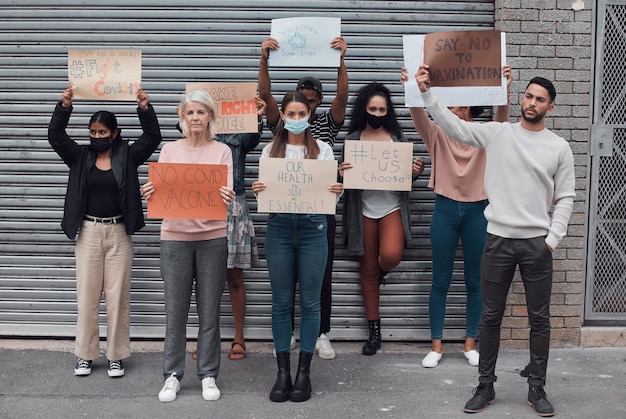Advancing Social Justice in the US: Challenges & Opportunities for the Next 5 Years

Advancing social justice in the US over the next five years faces challenges such as political polarization and systemic inequality, but also holds opportunities through grassroots movements, policy reforms, and technological advancements that promote equity and inclusion.
The pursuit of social justice in the United States is a continuous journey, marked by both significant strides and persistent setbacks. Looking ahead, the next five years present a critical window to address deep-seated inequalities and build a more equitable society. Understanding what are the key challenges and opportunities for advancing social justice in the US in the next 5 years? is crucial for shaping effective strategies and fostering meaningful change.
Understanding the Current Landscape of Social Justice in the US
To effectively address the challenges and seize the opportunities that lie ahead, it’s essential to first understand the current landscape of social justice in the United States. This involves recognizing the key areas where disparities persist, and acknowledging the historical context that has shaped these inequalities.
Persistent areas of inequality
Despite progress in some areas, significant inequalities remain deeply entrenched in American society. These disparities affect various groups, including racial and ethnic minorities, women, LGBTQ+ individuals, people with disabilities, and low-income communities.
- Racial disparities: Black Americans, in particular, continue to face systemic discrimination in areas such as education, housing, employment, and the criminal justice system.
- Gender inequality: Women still earn less than men for similar work, and are underrepresented in leadership positions across various sectors.
- Economic inequality: The gap between the rich and the poor continues to widen, with a disproportionate share of wealth concentrated in the hands of a few.
Understanding the interconnectedness of these inequalities is crucial for developing comprehensive and effective solutions. For example, racial discrimination often exacerbates economic inequality, while gender bias can limit access to education and employment opportunities.

The current state of affairs calls for concerted efforts to address systemic inequalities and create a more just and equitable society for all Americans.
Political Polarization and its Impact on Social Justice
One of the most significant challenges to advancing social justice in the US is the increasing political polarization. The division between the left and right has deepened in recent years, making it difficult to find common ground and enact meaningful reforms.
Deepening divisions
The current political climate is marked by a lack of compromise and a tendency to demonize opposing viewpoints. This has made it difficult to address issues such as healthcare, immigration, and climate change, all of which have a direct impact on social justice.
The role of social media
Social media has amplified political polarization, creating echo chambers where people are only exposed to information that confirms their existing beliefs. This has made it more difficult to engage in constructive dialogue and build consensus around social justice issues.
- Echo chambers: Social media algorithms often prioritize content that aligns with users’ existing beliefs, reinforcing biases and limiting exposure to diverse perspectives.
- Misinformation: The spread of false or misleading information can further exacerbate political divisions and undermine trust in institutions.
- Online harassment: Social media can also be a platform for online harassment and hate speech, which can silence marginalized voices and discourage activism.
Overcoming political polarization is essential for advancing social justice in the US. This requires a commitment to dialogue, empathy, and a willingness to find common ground, even on difficult issues.
Systemic Racism and Discrimination
Systemic racism and discrimination continue to be major obstacles to achieving social justice in the US. These deeply ingrained biases affect every aspect of life, from education and employment to housing and healthcare.

Manifestations of systemic racism
Systemic racism manifests in a variety of ways, including:
- Racial profiling: People of color are disproportionately targeted by law enforcement, often based on stereotypes and biases.
- Workplace discrimination: People of color may face barriers to hiring, promotion, and equal pay.
- Housing segregation: Discriminatory housing practices have created segregated neighborhoods with limited access to resources and opportunities.
Addressing systemic racism
Addressing systemic racism requires a multi-pronged approach that includes policy reforms, education, and cultural change. Some potential strategies include:
- Police reform: Implementing policies to reduce racial profiling and police brutality.
- Affirmative action: Promoting diversity in education and employment through targeted programs.
- Fair housing initiatives: Enforcing fair housing laws and investing in affordable housing in underserved communities.
By dismantling systemic barriers and promoting equal opportunity, the US can create a more just and equitable society for all.
Economic Inequality and Poverty
Economic inequality and poverty are significant barriers to social justice in the US. The gap between the rich and the poor has widened in recent decades, leaving millions of Americans struggling to make ends meet.
The widening wealth gap
The top 1% of Americans now own a disproportionate share of the nation’s wealth, while many working families are struggling to afford basic necessities such as housing, food, and healthcare.
The impact of poverty
Poverty has a devastating impact on individuals and communities, limiting access to education, healthcare, and other essential resources. Children who grow up in poverty are more likely to experience poor health, educational attainment, and future economic prospects.
Addressing economic inequality
Reducing economic inequality and poverty requires a comprehensive approach that includes:
- Raising the minimum wage: Increasing the minimum wage to a living wage can help lift millions of workers out of poverty.
- Investing in education: Providing access to high-quality education for all children, regardless of their background, can help them develop the skills they need to succeed in the 21st-century economy.
- Expanding access to healthcare: Ensuring that all Americans have access to affordable healthcare can improve health outcomes and reduce financial strain.
By addressing economic inequality and poverty, the US can create a more inclusive and prosperous society for all.
The Role of Grassroots Movements
Grassroots movements play a crucial role in advancing social justice in the US. These movements are often led by marginalized communities and their allies, and they provide a platform for raising awareness, organizing collective action, and advocating for policy change.
Examples of successful movements
Throughout American history, grassroots movements have been instrumental in achieving significant social and political reforms. Some notable examples include:
- The Civil Rights Movement: This movement fought for racial equality and desegregation in the 1950s and 1960s.
- The LGBTQ+ Rights Movement: This movement has advocated for equal rights and protections for lesbian, gay, bisexual, and transgender individuals.
- The Women’s Rights Movement: This movement has fought for gender equality in areas such as education, employment, and reproductive rights.
The power of grassroots movements lies in their ability to mobilize people, amplify marginalized voices, and hold those in power accountable.
Supporting grassroots movements
Supporting grassroots movements is essential for advancing social justice in the US. This can involve:
- Volunteering time: Contributing time and skills to organizations working on social justice issues.
- Donating money: Providing financial support to grassroots organizations.
- Raising awareness: Using social media and other platforms to amplify the voices of activists and organizers.
By empowering grassroots movements, the US can create a more just and equitable society from the ground up.
Leveraging Technology for Social Justice
Technology can be a powerful tool for advancing social justice in the US. From social media to data analytics, technology can be used to raise awareness, organize collective action, and advocate for policy change.
Social media activism
Social media platforms have become important tools for social justice movements, allowing activists to share information, mobilize supporters, and coordinate actions. Hashtags such as #BlackLivesMatter and #MeToo have helped to raise awareness about systemic racism and sexual harassment, and have sparked national conversations about these issues.
Data analytics and social justice
Data analytics can be used to identify patterns of discrimination and inequality, and to develop targeted interventions to address these issues. For example, data can be used to identify racial disparities in policing, housing, and healthcare, and to develop strategies for reducing these disparities.
Digital divide
However, it’s important to recognize that the digital divide can exacerbate existing inequalities. Low-income communities and people of color are less likely to have access to the internet and digital devices, which can limit their ability to participate in online activism and access essential resources.
To ensure that technology is used to advance social justice, it’s essential to address the digital divide and ensure that all Americans have access to the tools and resources they need to participate in the digital age.
| Key Point | Brief Description |
|---|---|
| ⚖️ Political Polarization | Divisions hinder consensus on social justice issues. |
| ✊ Systemic Racism | Deep-rooted biases impacting every facet of life. |
| 💰 Economic Inequality | Widening wealth gap affects millions. |
| 📱 Technology Leverage | Using digital tools for awareness and action. |
[Frequently Asked Questions]
▼
Social justice is the view that everyone deserves equal economic, political and social rights and opportunities. It aims to ensure fair and equitable treatment for all groups.
▼
It’s important because it helps reduce inequality, promotes diversity, fosters economic growth, and creates more stable and peaceful communities by addressing systemic disadvantages and ensuring everyone has opportunities.
▼
You can promote it by raising awareness, advocating for policy changes, volunteering with organizations dedicated to social causes, and educating yourself and others about inequality and its effects.
▼
Major areas include racial inequality, gender disparities, LGBTQ+ rights, economic injustice, and environmental inequities, all requiring focused and comprehensive solutions.
▼
It helps by raising awareness through social media campaigns, enabling data-driven advocacy, and facilitating grassroots movements, though addressing the digital divide remains crucial for inclusivity.
Conclusion
Advancing social justice in the US over the next five years requires a multifaceted approach that addresses political polarization, systemic racism, economic inequality, and other key challenges. By supporting grassroots movements, leveraging technology, and enacting policy reforms, the US can move closer to a more just and equitable society for all.





